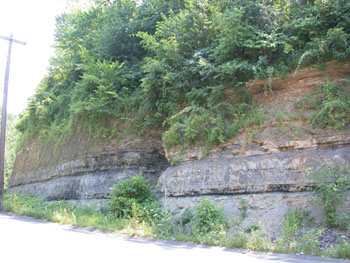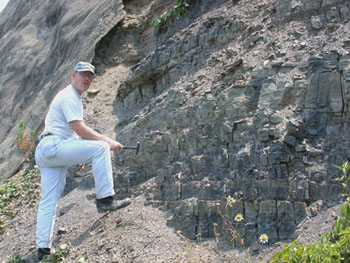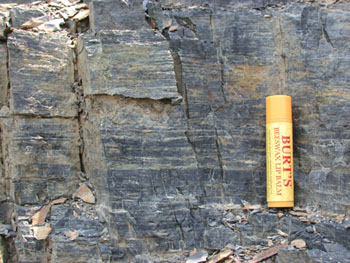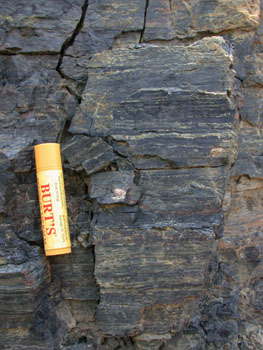Coal
Fresh coal is a jet-black rock that is noticably less dense than most other rocks. In the field, however, weathering often gives the coal a greyish, yellowish, or rust-colored coloring.
|
|
If you see a dark gray or black sedimentary layer in an outcrop, it is probably either coal or black shale. Black shales are rich in organic matter and clay minerals.
Most coals in the eastern U.S. are 6 to 18" thick. The Pittsburgh Coal, the gray-black double layer at the bottom of the outcrop here, is a remarkable 10' thick.
|

|
|
Coal often naturally breaks into blocky pieces due to sets of fractures that intersect each other at roughly 90°.
This outcrop is not the jet-black of fresh coal due to the weathering of pyrite. Pyrite is made of iron and sulfur.
|

|
|
Sulfur released by pyrite weathering highlights fine laminations that reflect the original fine layering of the coal. Pyrite weathering releases both oxidized iron (a.k.a. rust) and various sulfur compounds. Native (elemental) sulfer is yellow. If the sulfur oxidizes all the way to sulfate, sulfuric acid is produced and acidic waters are released into nearby drainages.
|

|
|
Here you can see the black color of the finely laminated coal under the sulfur and iron staining.
To make 1 foot of coal requires 50 or 100 feet of plant debris in a swamp. Thus, a 1 mm lamination in this coal equals a 5-10 cm layer in the original swamp. The 10 feet of the Pittsburgh coal equals 500 feet of plant debris in the swamp of 300 million years ago. That was some swamp!
|

|
|




